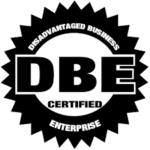In Strategic Providence, I explored how personal and professional transformation emerges when clarity meets conviction. It was an optimistic look at building from the inside out. But what happens when the environment around you is actively working against that growth? Strategic Destruction is the answer to that question. It’s the shadow twin—focused not on opportunity, but on the systemic suppression of it. Where Strategic Providence aims to empower, Strategic Destruction reveals how the very systems we operate within often aim to inhibit.
Every city claims it wants growth. Few are willing to dismantle the power structures that are holding it hostage.
Behind the scenes in many metropolitan areas, growth isn’t failing because of external threats—it’s being smothered by internal strategies of exclusion, stagnation, and fear of change. This is Strategic Destruction: the repeatable, systemic ways cities suppress innovation, repel investment, and reward conformity over boldness.
These aren’t just passive oversights. They’re active, recurring behaviors—often orchestrated by the very groups that claim to be champions of progress.
1. Power Silos
“Access is currency—and the vault is closed to outsiders.”
Cities don’t just have gatekeepers—they have power silos. These entrenched groups—business coalitions, civic foundations, political insiders, old-money networks—determine who gets funding, visibility, and influence.
A Brookings Institution report on urban startup ecosystems found that more than 75% of venture capital in second-tier cities goes to founders already embedded in local networks. That’s not meritocracy—it’s informal gatekeeping.
The hidden tax: Small businesses must pay into pet nonprofits, join “select” civic orgs, or align themselves politically just to be seen as legitimate.
Case in Point:
In sports, the fall of elite quarterback Shedeur Sanders in early NFL draft conversations sparked controversy—not because of his talent, but because of his tone, brand control, and refusal to play by old rules.
Analysts questioned his “fit” and “attitude”—coded language many believe reflected discomfort with his independence and family legacy.
Whether you call it quiet bias or strategic collusion, the message was clear: don’t challenge the ecosystem. Play by our rules or get devalued.
This mirrors what happens in many cities when diverse or disruptive founders emerge without prior approval from the local power silos.
Strategic Consequence:
New ideas are filtered out before they hit the table. Diverse founders disengage. Innovation gets rerouted to cities with open gates, not gatekeepers.
2. Regulation-as-Resistance
“Innovation dies in triplicate form.”
Regulation is meant to protect the public. But in many cities, it’s become a tool of delay and denial.
- Permits and zoning can take 6–12 months, even for small projects.
- The Kauffman Foundation found that startups are 30% less likely to survive in cities with bloated regulatory structures.
One Charleston entrepreneur noted:
“You’d think we were applying to launch a rocket, not open a café.”
Strategic Consequence:
Newcomers are discouraged. Founders waste momentum. Informal economies grow in the shadows while innovation stagnates in the light.
3. Misaligned Incentives
“They fund the past, not the future.”
Instead of investing in innovation districts, digital infrastructure, or startup support systems, cities pour money into “legacy projects”—sports stadiums, convention centers, and low-wage job lures.
Good Jobs First reports that over $95 billion in subsidies went to corporations from 2015–2022. Less than 6% supported local entrepreneurs or minority-owned businesses.
“We’re building monuments instead of momentum,” said a former urban policy advisor.
Strategic Consequence:
Cities lease their futures to outside brands instead of building from within. Economic development becomes a PR campaign instead of a prosperity engine.
4. Stagnant Civic Culture
“Don’t challenge the table if you weren’t invited to sit at it.”
Many metro areas suffer not from a lack of ideas—but from a civic culture that punishes the wrong voices for saying them.
- The Knight Foundation found only 15% of residents in mid-sized cities feel they have any influence on community growth decisions.
- Public forums are often dominated by power silos, long-standing relationships, and polite resistance to anything new.
Dissent is labeled disrespect. Nonconformity is seen as a threat. And innovation becomes political kryptonite.
Strategic Consequence:
Pilots are killed. Risk-taking leaders stay silent or leave. And the entire region learns to mimic stagnation as survival.
5. Fragmented Vision
“No plan, no compass, no future.”
Without an integrated economic strategy, cities drift. Departments act in silos. Private sector moves without public input. Big bets are made without long-term alignment.
Only 13% of U.S. metro areas have a formal cross-sector innovation strategy, according to the Urban Institute. The rest react in real-time to old problems with outdated tools.
“If everyone’s running their own playbook, it’s not a team—it’s chaos.”
Strategic Consequence:
Momentum stalls. Partners get frustrated. And transformation becomes theoretical, not tactical.
The Hidden Rite of Passage
In many cities, it’s not enough to be brilliant—you must be blessed by the silos.
To conduct business, small companies are often:
- Pressured to join exclusive associations.
- Expected to sponsor events or organizations for “visibility.”
- Urged to work through connected individuals or organizations.
- Coerced into supporting agendas in exchange for opportunity.
This is a quiet but costly rite of passage. It’s not law. It’s culture. And for new entrants—especially those without generational wealth or deep networks—it can be both exhausting and disqualifying.
The Destruction Scorecard: How Sick Is Your City?
Below is a link that allows you to take the Destruction Scorecard Survey. Once you submit the survey, we will get back to you with your score and recommendations.
Use this checklist to assess your region. Score 1 point for each “Yes”:
| Question | Yes/No |
|---|---|
| Are new businesses expected to financially support power silos to gain access? | |
| Are major contracts or grants concentrated among a familiar few players? | |
| Does regulation regularly delay or kill business formation? | |
| Is there no formal, cross-sector innovation or economic transformation plan? | |
| Do leaders prioritize attracting big-name corporations over developing local talent? | |
| Are public forums and civic spaces dominated by the same demographics and voices? | |
| Do fewer than 20% of small business owners feel heard by local leadership? | |
| Are high-growth startups increasingly looking to relocate for better access? |
Score:
- 0–2: Strategic Providence possible—your city is positioned for transformation.
- 3–5: Warning zone. Destructive patterns are starting to calcify.
- 6–8: You are living in a Strategic Destruction zone.
You can take the survey here: Strategic Destruction Survey
Conclusion: Cities Get the Future They Tolerate
Strategic Destruction is not about oversight—it’s about strategic resistance to anything that challenges the status quo. As long as power silos go unchecked, informal collusion will continue to shape who wins, who loses, and who leaves.
To change the game, cities must choose Strategic Providence over fear. That means backing the outsiders. Funding the unknown. And welcoming new voices not as a threat—but as a future.
To the bold: the gate may be locked—but the blueprint is yours to redesign.



